Last year brought to us a lot of great conferences, Collabsphere being one of them. In an all virtual environment we were able to share info on Domino and not only.
Franz Walder from Panagenda presented on Domino Application Strategy, offering us all some insights for modernization and migration projects.
Panagenda has made a name for itself as a company which helps its customers be more efficient, reduce manual effort and save costs.
The Domino platform has evolved quite a bit leading to:
- increased number of admins and developers;
- increased number of re-organizations.
When you start a new project you are in the situation where the Project Goals meet Reality. Out of the Project Goals the Project Scope is created. The purpose is that this scope gets to be the reality of what is needed.
The question that arises is: “How to define the project scope to make those strategic goals reality?“.
Here is an example of a goal: By the end of the year all the replications are going to be on mobile; migrate off Notes by the end of the year. The question that those goals rise is if it’s also reality, how do you get there? Is this goal realistic? If you as a PM set out into this endeavour knowing that it’s not realistic you might set a course for failure from the get go.
This leads to a brand new question: “Do you have to re-define the goals in order to deliver a successful project?” or Cut the project into smaller pieces which can be delivered safely and on time; but delaying the main goal into a later stage of the project?
The conclusion to this is that as a Project Manager one of your main assets is knowing to ask the right questions. When you gather facts and put those numbers behind the questions you are asking can help you change the goal to a more realistic path.
Asking the right questions when working on your Domino Application Strategy
1. What is the structure and size of your environment?
As one might expect when talking about migration projects the first thing you will need to know is how big and complex of an environment you are talking about.
Here is a great example:
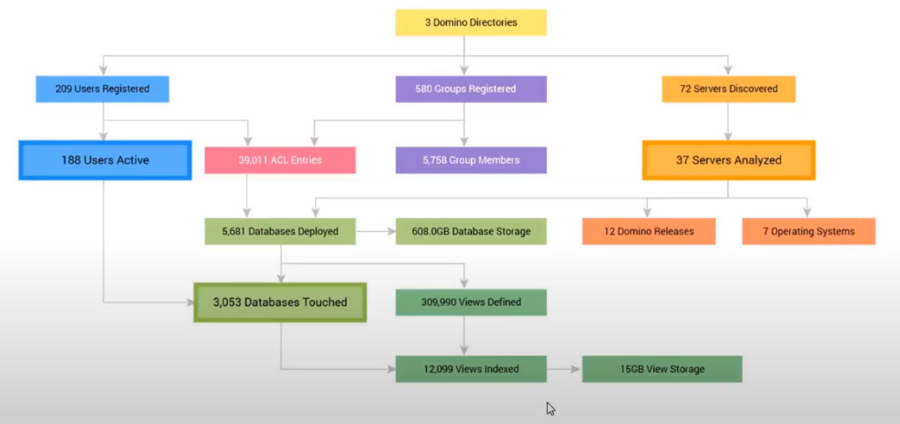
Despite the fact that you might think that this info is really easy to get, Notes makes things a bit more complicated. However, having this information is the fundament on witch you will base your strategy.
2. How many databases are unused?
This question will help you determine what info and how much info you can choose to archive and retire.
Panagenda has conducted a survey among the people in the HCL, Domino universe and one of the questions asked was just that: Would it be useful to be able to identify unused apps with ease? As it was to be expected, it proved that this aspect is rather important.
3. How many databases can be excluded from the project?
One of the things panagenda does with their solution is helping their customers “cut the pie” into smaller solutions. Having things separated into multiple pieces can help you optimize your work and give you better management.
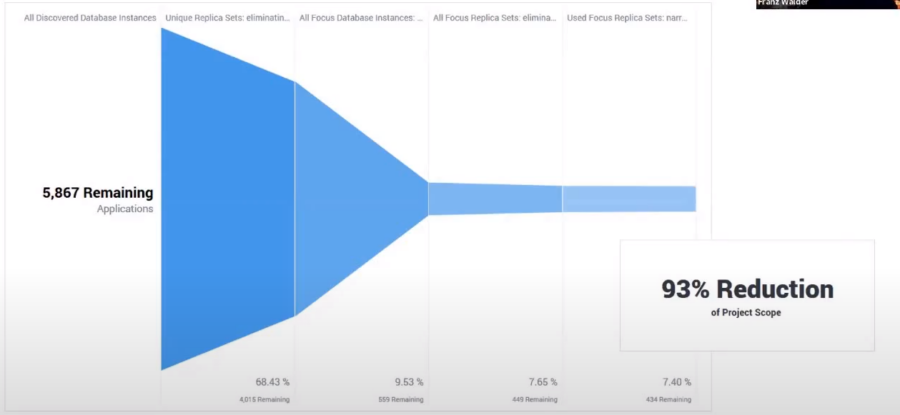
4. How many users are actively using Notes?
This question is important in a couple of different areas. The first thing that comes to mind is as you would expect License Cost and working with it. Just the number of users is not the only thing that is important. Equally important is to know how those licenses are being used.
If you have an environment where your users are using 2 or 3 databases on average, this is different from having users that are using 25 databases. The purpose is having a good image of how your environment is shaped and used.
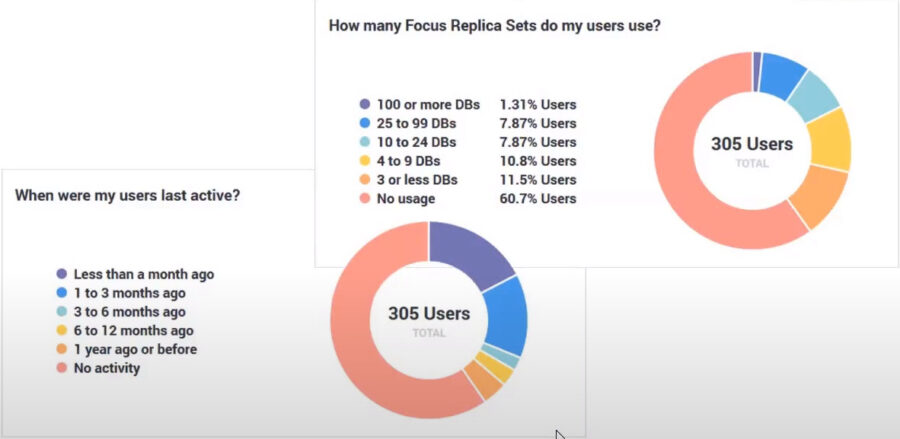
5. How does DB design complexity impact re-development costs?
Knowing all the dependencies of the app source code and how they work will give you a hand in calculating the project effort as well as better assessing the migration risks. When dealing with changes on the platform, regardless of the way you choose to go you will have to face a lot of challenges.
One problem that customers face is not having the development resources to make any change like going mobile or make the app web available.
One solution is reducing the development costs. The growth of Notes has lead to a lot of code duplication.
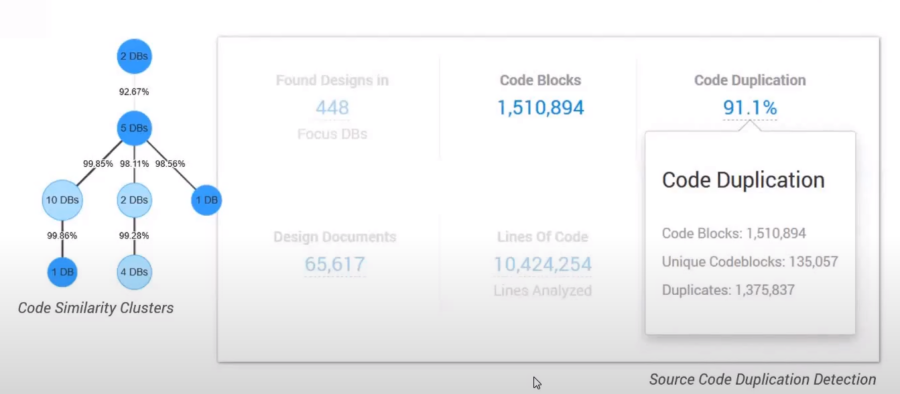
A lot of old applications have started from a template, like the mail one for instance, or from a database, this has led to a great amount of duplicate code blocks. So if you are looking at a code block and find issues with it, ( You want to move to cloud with your Notes app so you will look for hard coded IP addresses for instance. If you identify something like that, obviously you will fix it. Things change when you know that code block is present in a number of other of your apps so you can apply the change all around.
Discover the Roadblocks in your Source Code
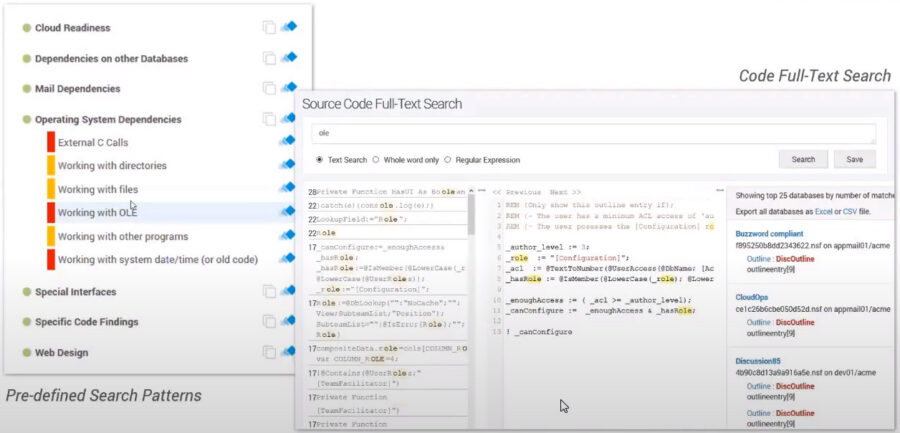
6. Who are the application owners, who are stakeholders in the project?
The answer to this question is vital for the Project Manager to understand how changing the app will impact the people using it. You’ll need to grasp the business processes that you are impacting,what are the consequences of the app not working at all. Who is impacted if something gets archived or made read only and also offers a great source of information, use cases, suggestions.
One of the most reliable ways to get this info is looking at usage. This is important not just from the perspective of who to talk to about the application but also helps determine which apps are important to certain departments.
Activity Audit by Application, User, Department or Location
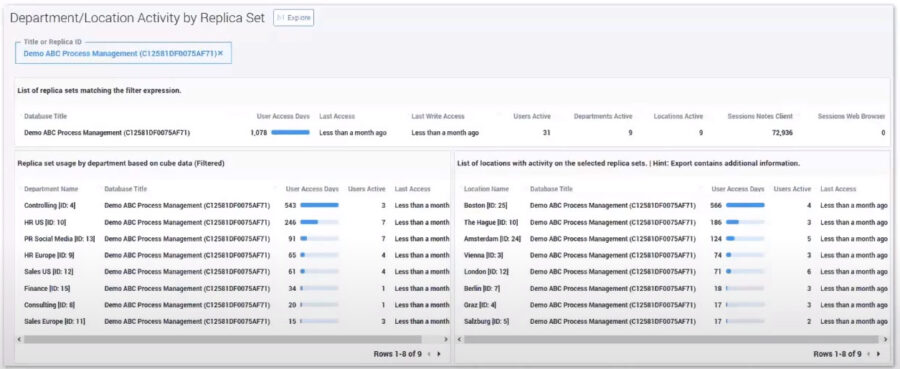
This view offers you a great set of tools in respect to knowing who uses what tool. It’s also important because you can identify what apps a person that left the company was using for instance and transfer access and knowledge to the person which replaces that person.
7. What are the most efficient paths forward for your applications?
As you might expect this question is not one with an easy answer. There are multiple aspects that need to be taken into consideration. One way to tackle this is giving a baseline, categorizing the applications by comparing usage and complexity.
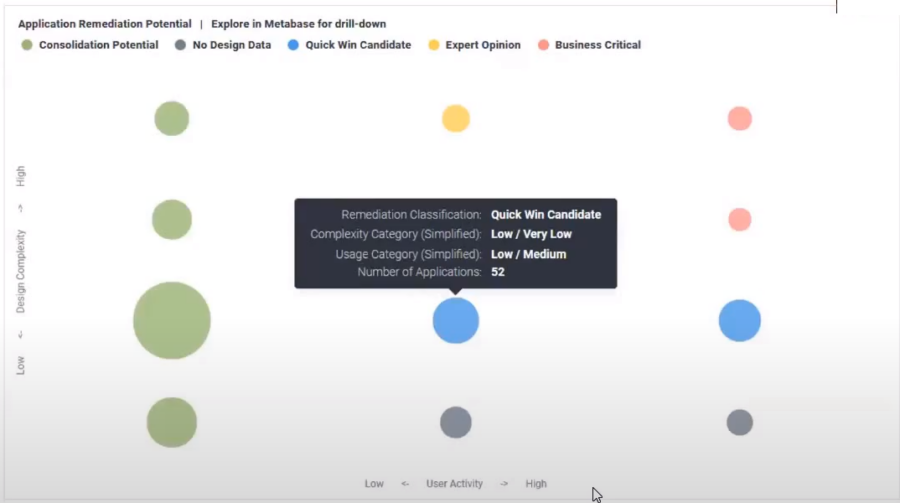
Some apps might not be very complex but really used while some might be complex and at the same time at the core of your business. These factors need to be taken into consideration when starting a project of this sort.
What to keep in mind when talking about the most efficient paths forward for your apps?
- No single solution fits every application
- Much might be dictated by your project goals
- Analytics must not have an agenda beyond presenting facts.
How does application content influence my app transformation choices?
How old is the content of my DBs and who created it?
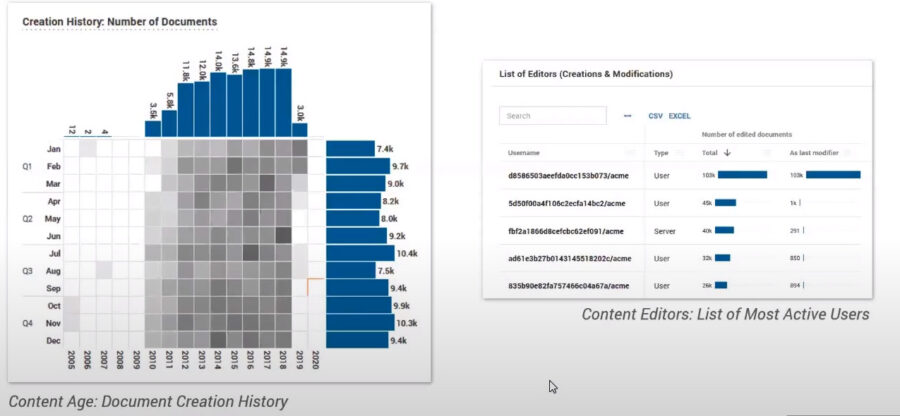
You need to determine if a database migration is relevant, or is archiving it be a better solution. This is the step when customers see how old their content is, when was the last time when content was created in that database.
One other thing that you need to pay attention to is what types of attachments you have and what size they are. If you have a lot of PDFs or small databases you might consider Sharepoint as a solution. Of course everything has limitations, so if you have large databases with a lot of videos or CAD files you might need to consider a different solution. The bottom line is that a proper analysis of attachments and their size will give you the information you need to determine which is the best solution for you.
What in my design is important and what is dangerous?
The database design can also pose some challenges: forms and views are the most important. For instance, if you create an app that started from the Mail Template you most probably did not use all the forms and views that that template offers. So, when you need to beautify it, or bring it to the web, you don’t need to work on the whole template, just on the ones that your app is actually using. This is where database design becomes important, as it will show you exactly what needs to be modified, making your work that much easier.
The second important part with design is what you have embedded in your documents. Do you work with Hotspots and Doclinks, all the special RichText Objects can be really important and can dictate what is possible going forward with your application. You will need to understand that in order to understand how you can modernize your app.
Do document encryption and reader fields play a role?
When analyzing the content you will be able to understand documents, encryption and reader and author fields. Documents and Signature and Reader Author Fields can have a big impact on what your application will be. If you migrate of Notes and some Documents are encrypted and you don’t have the right encryption keys you will not be able to migrate everything out of that database.
The same applies to Reader and Author Fields; if you are not in the reader field to see a document during a migration you will not get it, if you try to access it with the wrong ID when modernizing it you will not get it. Reader Fields can also have a great impact on the workflow and on how an application works itself. In that regard understanding how both of these areas are used are going to help you as a Project Manager to understand how to move forward with the application and what you can and cannot do.
